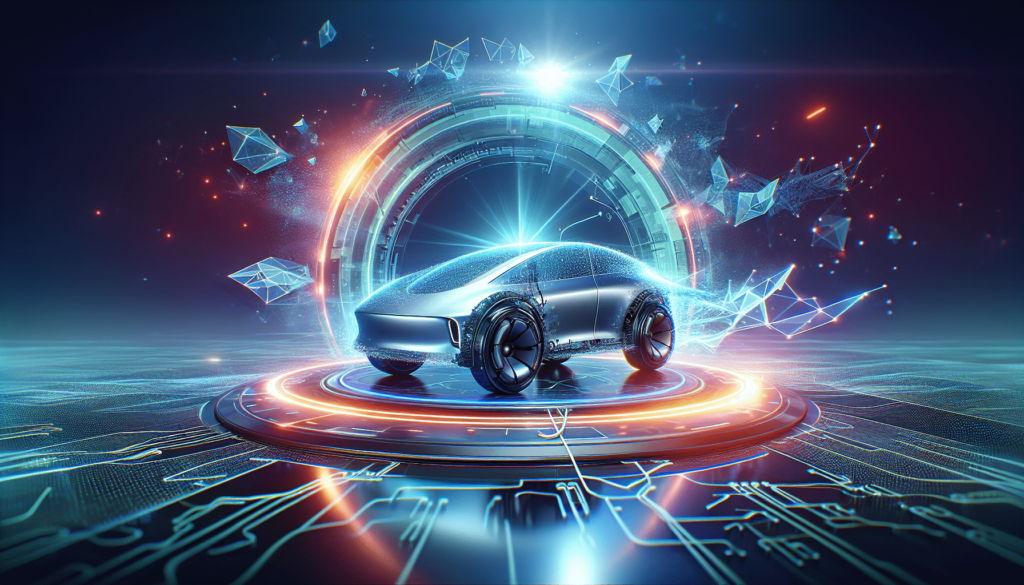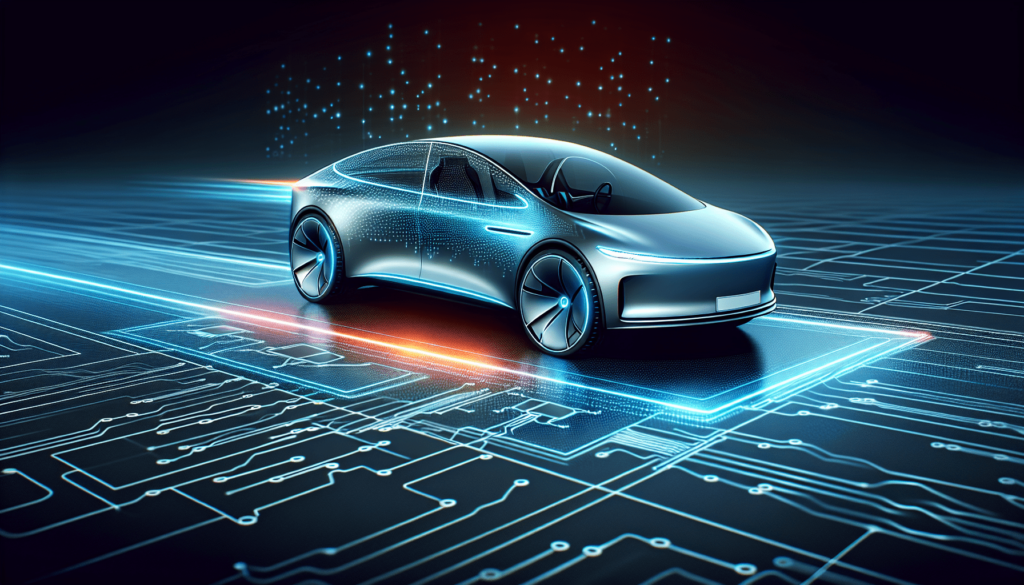Have you ever wondered how autonomous driving technology is seamlessly being integrated into electric vehicles (EVs)? The advancements in autonomous driving technology have opened up a world of possibilities for the automotive industry, paving the way for safer and more efficient transportation. With EVs gaining popularity for their sustainability and eco-friendly nature, manufacturers and tech companies are now focusing on combining these two emerging technologies to create a formidable combination. In this article, we will explore the exciting developments and challenges in the integration of autonomous driving technology into EVs, revolutionizing the way we travel.

This image is property of pixabay.com.
Sensor Technology
When it comes to autonomous driving, sensor technology plays a crucial role in creating a comprehensive and accurate perception system. LIDAR sensors, which use laser beams to measure distances and detect objects, provide a 360-degree view of the vehicle’s surroundings. This allows for precise object recognition and environment mapping. Radar sensors, on the other hand, use radio waves to detect objects and their velocity, making them ideal for detecting moving objects such as vehicles or pedestrians. Ultrasonic sensors use sound waves to detect objects in close proximity to the vehicle, ensuring safe parking and maneuvering. Lastly, camera sensors capture visual data and enable more detailed recognition of objects and road signs. By combining these sensor technologies, autonomous vehicles are equipped to perceive and understand their environment accurately.
Perception Systems
Autonomous vehicles rely on advanced perception systems to gather information about their surroundings and make informed decisions. Object recognition is crucial in identifying and classifying objects in real-time, allowing the vehicle to respond accordingly. This enables the vehicle to differentiate between a pedestrian and a lamppost, for example, ensuring the safety of all road users. Environment mapping involves creating a 3D representation of the vehicle’s surroundings, enabling accurate localization and path planning. Pedestrian detection is a vital part of ensuring the safety of vulnerable road users, such as pedestrians and cyclists, by alerting the vehicle to their presence. Lane departure warning systems use cameras or sensors to detect when the vehicle is drifting out of its lane, providing a warning to the driver or autonomously correcting the vehicle’s trajectory.
Machine Learning Algorithms
Machine learning algorithms are at the core of autonomous driving technology, enabling vehicles to continuously learn and improve their performance. Deep learning networks, such as artificial neural networks and convolutional neural networks, have revolutionized the field by allowing vehicles to process and analyze vast amounts of data. These networks can identify patterns, recognize objects, and make predictions based on their previous experiences. Reinforcement learning, another significant machine learning algorithm, allows vehicles to learn optimal behavior through trial and error. By combining these algorithms, autonomous vehicles can adapt to various driving scenarios and continually enhance their decision-making capabilities.
Connectivity
Connectivity plays a crucial role in autonomous driving and is essential for real-time communication and data sharing. V2X (Vehicle-to-Everything) communication enables vehicles to communicate with other vehicles, infrastructure, and even pedestrians. This exchange of information allows for increased awareness of the surrounding environment, reducing the chances of accidents and enabling smoother traffic flow. Cloud-based data sharing facilitates the sharing of real-time updates, such as road conditions, traffic congestion, and construction zones, among vehicles. By receiving these updates, autonomous vehicles can make informed decisions and adjust their routes accordingly. Fleet learning involves sharing data and insights across a network of autonomous vehicles, allowing for collective learning and improved performance.

This image is property of pixabay.com.
Control Systems
Control systems are responsible for translating the decisions made by autonomous vehicles into actions such as steering, braking, and acceleration. Steering control ensures precise and accurate control of the vehicle’s direction, enabling smooth lane changes and turns. Braking control is vital for maintaining a safe distance from other vehicles and executing emergency braking when necessary. Acceleration control ensures smooth and efficient acceleration, taking into account factors such as traffic conditions and road gradients. Adaptive cruise control allows vehicles to automatically adjust their speed based on the distance to the vehicle in front, ensuring a safe and comfortable driving experience.
Collision Avoidance
Collision avoidance systems are crucial for enhancing the safety of autonomous vehicles. Emergency braking systems can detect imminent collisions and automatically apply the brakes to prevent or mitigate the impact. Obstacle detection systems use sensors and cameras to identify obstacles in the vehicle’s path, providing warnings or taking evasive actions to avoid a collision. Automatic emergency steering systems allow the vehicle to automatically change its direction to avoid collisions when braking alone is not sufficient. Collision warning systems provide visual and auditory alerts to the driver or passengers, informing them of potential collisions and allowing for early intervention.

This image is property of pixabay.com.
High-definition Mapping
High-definition mapping is essential for ensuring precise localization and safe navigation of autonomous vehicles. Precise localization involves accurately determining the vehicle’s position relative to its surroundings, using GPS, sensors, and high-definition maps. Dynamic map updates ensure that the map data is constantly updated to reflect changes in the road network and environment. This allows autonomous vehicles to stay up to date with road closures, traffic patterns, and other factors that may affect their route planning. HD map integration involves combining high-definition maps with real-time sensor data, creating a detailed and accurate representation of the vehicle’s surroundings. Map-based path planning enables the vehicle to select the most efficient and safe route based on the available map data.
Human-machine Interface
The human-machine interface (HMI) is the connection between the autonomous vehicle and its occupants. Dashboard displays provide the driver and passengers with real-time information about the vehicle’s status, route, and surrounding environment. Touchscreen controls allow for easy and intuitive interaction with the vehicle’s features and settings. Voice recognition technology enables hands-free control, allowing the driver to give commands and access information without taking their hands off the steering wheel. Gesture control allows for natural and intuitive interaction by recognizing hand and body movements, providing a futuristic and user-friendly experience.

Regulatory Challenges
As autonomous driving technology continues to advance, several regulatory challenges need to be addressed to ensure its safe and widespread adoption. Safety regulations play a crucial role in establishing the safety requirements and standards that autonomous vehicles must adhere to. These regulations cover aspects such as performance, testing, and certification to ensure that autonomous vehicles meet the necessary safety standards. Data privacy concerns arise from the extensive collection and sharing of data in autonomous vehicles. It is essential to establish clear regulations and protocols to protect the privacy and security of individuals’ data. Legal liability is another significant challenge, as determining responsibility in the event of an accident involving autonomous vehicles can be complex. Efforts are being made to establish legal frameworks and liability guidelines to address these challenges. Lastly, standardization efforts aim to promote interoperability and compatibility among autonomous vehicles and their supporting infrastructure, ensuring a seamless and efficient autonomous driving ecosystem.
Future Developments
The future of autonomous driving holds exciting possibilities and advancements. Level 5 autonomy, which represents full automation in all driving conditions, is a goal that many automotive and technology companies are working towards. Achieving level 5 autonomy would mean that vehicles can operate without human intervention in any situation, leading to a revolution in personal transportation. Shared autonomous vehicles, where autonomous vehicles are deployed in fleets and shared among users, can significantly reduce the number of vehicles on the road, easing congestion and reducing emissions. Smart infrastructure integration involves integrating autonomous vehicles with existing infrastructure, such as traffic lights and road signs, to enhance communication and coordination. Autonomous vehicle legislation will continue to evolve and adapt to accommodate the rapid advancements in autonomous driving technology, ensuring a safe and efficient transition to a fully autonomous future.


